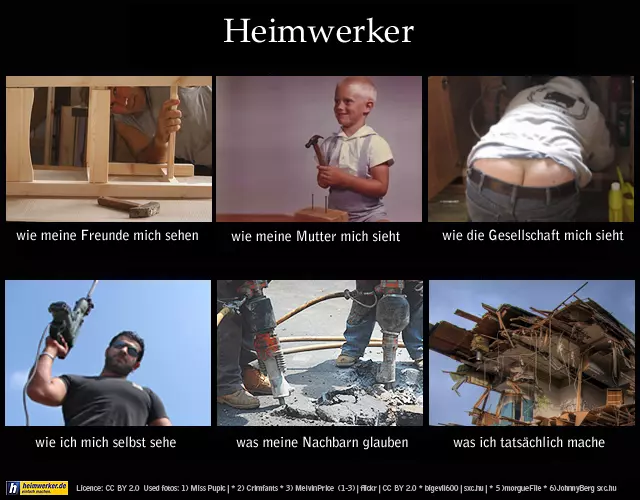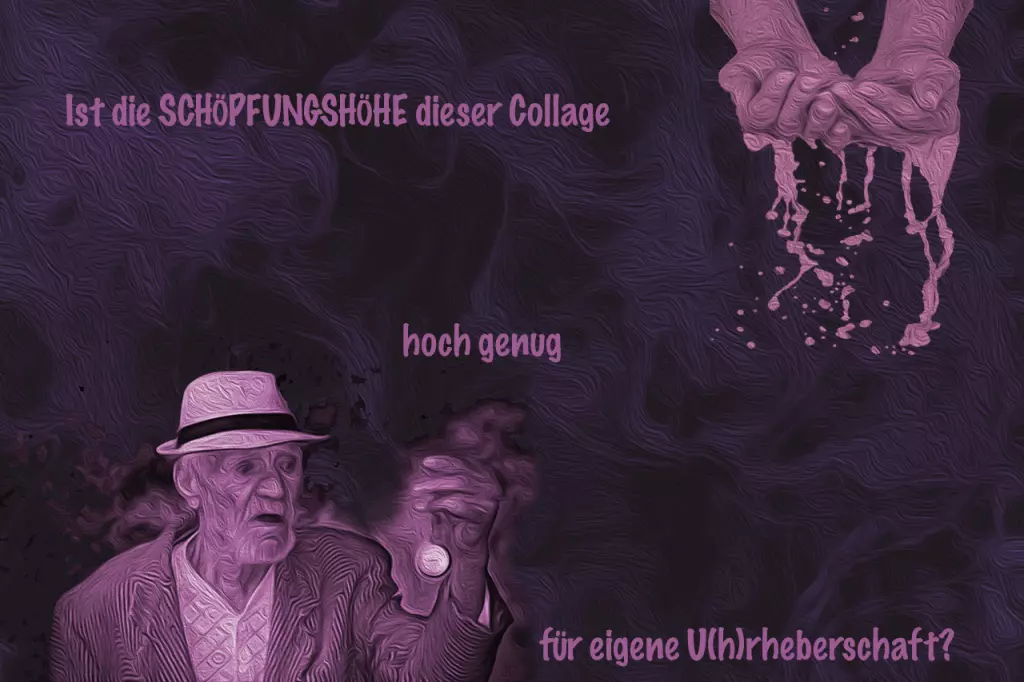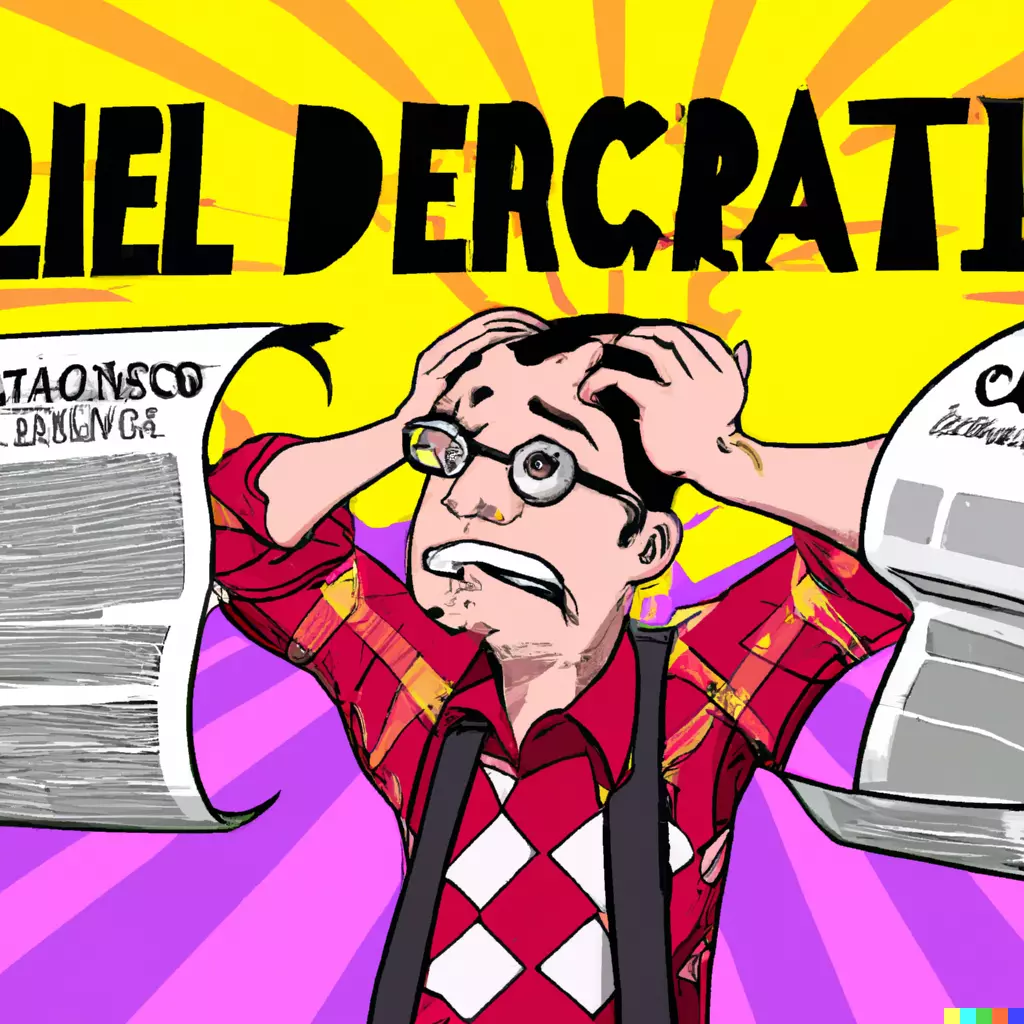
Blog Series "Proper Picture Credits": Part 5 - the special cases: Memes Collages, Screenshots and AI Images
Our blog article series on image credits continues to be one of the long-running favorites on our blog. Apparently, the topic is still interesting for online editors.
- Part 1: Image rights management in the company
- Part 2: Rules for online image credits
- Part 3: Maintaining and managing image credits in the CMS
- Part 4: Removing images completely from the CMS after warnings
- Part 5: The special cases: Memes, collages, screenshots, and AI images.
- (Coming soon) Part 6: Picturecredits - the new TYPO3 extension for correct image credits
At the moment we are busy migrating our blog from WordPress to TYPO3 and had to realize that there are some image forms whose correct proof we had not sufficiently clarified in the original articles. Since these questions came up unexpectedly often, we deal here once with the handling of such special cases and "basement corpses" from our own blog articles, which have now been exhumed again during the full migration of older articles.
Special forms of image credits in this blog article:
- Image credits for memes
- Image credits for image collages
- Image credits for screenshots
- Image credits for AI images
In the process, however, we also found some nasty copyright pitfalls.
Sample image credits:
"Copyright pitfalls" icon photo – Old Man Time: AdinaVoicu, Pixabay | CC0
1. how do i correctly show memes in the image credits?
The good news: meme images are now officially usable in Germany!
When this blog series began, we were still skirting around the issue of meme image credits, as use in Germany was generally not possible without the consent of copyright holders. There was no equivalent analogous to the fair use provision applicable in the US.
In 2021, it was finally clarified in the course of the copyright reform with the article § 51a UrhG that memes may also be used in Germany.
Permission is granted to reproduce, distribute and publicly reproduce a published work for the purpose of caricature, parody and pastiche. The authorization under sentence 1 includes the use of an image or other reproduction of the work used, even if it is itself protected by a copyright or related right.
Typical image memes are covered here primarily by the term pastiche (imitation, stylistic borrowing). However, the use of memes remains open to attack in the case of infringements of personal rights or trademark protection.
Annoyingly, however, the copyright reform now only clarifies that a meme may actually be used.
The bad news: How to create correct image credits for memes is still unclear.
Presumably, a detailed image credit for memes is unnecessary under the new legal situation, but if you want to include further details about a meme's origin for fairness reasons (or because of a greatly increased need for communication or security), you can follow one of the recommended scientific citation rules for memes.
Possible image citation details for an image meme as a suggestion:
- Useful: title of the meme (if known) or description.
- Optional: title of the website of the first publication of the meme (if known)
- Optional: URL of the first use (if known)
- Optional: Date of first use (if known)
- Meaningful: Date of adoption or adaptation
- Meaningful: location where the meme was found, publisher or meme generator
Example meme picture credits
For this - specially adapted for this occasion - meme, the voluntary-extensive image credit could then look like this:

Sample image credit:
"Hank's Reaction / Dean Norris' Reaction," image copyright: Marco Grob, "Portrait photos Dean Norris" (Twitter, 7/14/2014). Re-labeled for this article on 2/16/2023 using the Imageflip Meme-Generator.
Tip: A good source for researching the particulars needed is the meme database at „Know your Meme“.
2. image credits for collages and image alienations
Another relatively common problem is the image credits for collages that have been designed on the basis of other images.
Image rights must be clarified for all collage components
When designing your own collages, the first thing to do is to make sure that all image sources used are actually allowed to be further processed. We often use photos under CC0 or public domain in our blog, which are merely supplemented with text headings or logos. Thus, there is no obligation to provide image credits. However, we often document a link to the location of the original image - also so that we can subsequently adjust the collage.
It is important that no other copyrighted content is depicted on the image sources used. See this case of copy right infringements accusations for photo wallpapers. Although this case now got defused by a court decision in 2024. If other copyright-protected elements are recognizable in the images used, permission must also be obtained for these or licenses must be acquired for them.
Therefore, it is recommended to use as a component for photo collages only images that are under public domain or comparable licenses and do not contain other potentially protected works.
Image collages from Creative Commons licensed images
But what if a collage component clearly comes from an image with a Creative Commons license? Unless the original artwork has been modified to such an extent that an independent work with the corresponding level of creation (see below) exists, reference must obviously still be made to the actual author and his license.
Here now follows an example from our troubled past, a DIY meme based on the theme "What People Think I Do / What I Really Do". This image was compiled as a collage of six individual photos still clearly recognizable as image templates. These are not memes themselves and thus the meme collage does not fall under the meme rules described above.
For all the desired content, there were suitable images with free licenses, for which we only mentioned the creators out of courtesy. Only for the template of the socially relevant mason's deco had to resort to a photo with CC BY 2.0 license.
Therefore, this collage can only be used if this image component is also proven in the image credits. (To be on the safe side, we had also placed the reference to the image author and the license once again as text in the image, so that the image origin can still be reconstructed if the image should be further distributed by third parties without the obligatory reference).

Sample image credits:
DIY meme - image collage for heimwerker.de - using the image "Plumbers Crack" by Melvin Price at flickr, collage and original image under license CC BY 2.0. Also used other image sources under public domain license. Authors are 1) Miss Puple, 2) Crimfants, 3) MelvinPrice, 4) bigevil600. Images 5) and 6) found at Morguefiles.

Translation: Is the level of creation of this collage high enough for authorship?
If collages have a sufficient level of creation, new authorship arises
If the newly created image collage shows a sufficient level of creation, the copyright again applies to the new image creator and the image proof must be executed in accordance with the creator's stipulation or selected license.
Thereby, the artistic claim is quite high. In our blog, admittedly, never enough creativity was applied to illustrative collages to let this case occur. Therefore, we can just show a freshly improvised example here.
3. image credits for screenshots
Since we mainly deal with digital topics, you will find many screenshots in our articles that depict different user interfaces or screen designs.
Screenshots of completed websites or step-by-step instructions in tutorials of self-developed applications are not critical. As a rule, it can be assumed that these images do not reach the necessary level of creation to have to name the creator of the screenshot, even if it is of course a nice gesture to do so anyway.
The situation is different, of course, if you want to present layout drafts of graphic designers for a project. Here, the declaration of consent and naming of the author always makes sense.
Caution is advised, however, if copyrighted works of third parties can be seen on the screenshot. If possible, these should be removed or pixelated out (if they are only unimportant accessories to the actually desired purpose of the presentation).
If it is necessary for content reasons to show a screenshot with such a protected work in a recognizable form, the image citation right can be claimed. For this purpose, however, it is necessary to explain what is shown in detail in the surrounding text and to deal critically with the image content.
For further reading: RA Dr. Schwenke deals exhaustively with the subject of image citation in a practical article.
A practical use case for an image citation in our blog was a screenshot in which a particularly unsuccessful page layout of a third-party site had to serve as a warning for missing style guides. Finally, we also briefly discussed whether it would be permissible to take a screenshot of a screenshot of another blog page that had documented an even more horrific design fail. However, this idea was dropped for obvious reasons, preferring instead to "quote" another negative example directly.
4. AI images (AI images): How must images generated by artificial intelligence be accounted for?
With the current hype around the new AI tools such as Midjourney Stable Diffusion or DALL-E 2, it is of course not left out that artificial intelligence created images will be used on websites. The AI images are created by entering a text description (prompt) by a program that has been previously trained with a huge dataset of different images using deep learning technology.
No copyright protection possible for AI images.
At present, it can be assumed that image results generated in this way are not subject to copyright, at least in Germany and Europe, and to copyright in the USA, since there is no human author in the true sense. Accordingly, AI images are currently not accepted and distributed by the major stock photo agencies.
This means that on the one hand you can freely use the images on your own pages - according to the terms of use of the respective tool providers - but on the other hand you cannot really have them protected from unwanted use by third parties.
It has not yet been clarified whether the formulation of the texts for image generation (promts) or the entire curating process in the selection of the AI-generated images are to be evaluated as a creative achievement of a human being. It is possible that other protections may arise in this regard in the future.
Terms of use and licenses for AI images
We have seen that the creator of the images cannot be named. However, before using a generated image, you should clarify whether the provider of the image generation has set conditions for the use of the images.
Here is a brief overview of the guidelines of the providers of the most popular AI image generators (as of August 2024)
- DALL-E
- OpenAI has not yet defined a fixed form for image credits.
- The FAQ recommends formulations such as: “This image was created with the assistance of DALL-E 2” or “”This image was generated with the assistance of AI.”
- The prerequisite for use is that no human authorship may be feigned.
- Example picture credit from the creators webpage: “Created with DALL·E, an AI system by OpenAI”
- StableDiffusion(Stand August 2022)
- The generated images are licensed under an open source license, the Stable-Diffusion-Licence Stable Diffusion License. No other licenses may be added that contradict its principles.
- StableDiffusion emphasizes that copyright issues can be very different and complex depending on the country and that the right to use the generated images can only be non-exclusive.
- Midjourney (Stand 13. August 2024):
- The user receives the ownership rights to the generated image
- By using the service, you grant Midjourney the non-exclusive right to use all generated images.
- In the Terms of Service as of 3/2023, it was stipulated, at least for users of the free version, that the generated images should fall under CC BY NC 4.0 license. Due to the ban on commercial use, it was therefore not recommended to use the images generated with the free account on your own website or blog. However, this condition is no longer included in the current version of the 2024 terms of use.
- Dreamstudia.ai
- The generated images are in the public domain.
- Adobe Firefly (Stand März 2024)
- There are currently no rules or examples of how a Firefly-generated image should be displayed on a website.
- For distribution via social media posts, please use the hashtag #AdobeFirefly.
- Tess (see blog post of Apr 1, 2024)
- Official recommendation: Name of the Promt author and mention of the model version used (ideally with a link).
- Example: “Image by Distant Horizons on Tess”
Sample image credit:
AI-generated image “Desperate media editor doesn't know how to tag AI images and studies legal texts.” | Generator: DALL-E 2
Even if most AI image providers have not yet formulated precise rules for the attribution of images, it is advisable to follow the recommendations of the respective providers and at least name the tool used in the image credits. In view of possible later significance for authorship, it is advisable to at least internally document the prompt used to generate the images.
Recommendations for meaningful AI image credits
If the provider only releases (or released) the images for use under a Creative Commons license at the time of creation, the CC license must always be correctly stated in the image credits.
It is generally advisable to at least mention in the photo credits that the image was created with the help of an AI. Possible wording: “This image was created with the help of AI.” In an extended form, the author of the image prompt and the AI image generation tool used could be mentioned. “Image generated by Jane Doe / Adobe Firefly”.
An extremely detailed attribution - the maximum version, so to speak - which could be used, for example, for scientific texts, would consist of the name of the author of the prompt, the name of the AI model and version used (incl. URL), the URL to a permanent version of the image at the generation tool, the full prompt and the date of generation. Optionally, the name and company name of the developer of the model can also be provided.
Conclusion on the special cases of image credits
When it comes to correct image credits, there is currently a lot going on due to new image formats and changes in the legal situation, and clear guidelines for legal security cannot be applied to all image types.
Thus, a certain legal risk remains for image editors and publishers on their own website for almost all variants. However, the risks are relatively manageable when using memes, collages, screenshots or AI images.
It always makes sense to document the image credits (this also includes the special cases discussed here) in as much detail as possible - not only to keep the legal risk low, but also for more transparency and as a matter of courtesy to the creators.
Please feel free to share this article.


Comments
No comments yet.